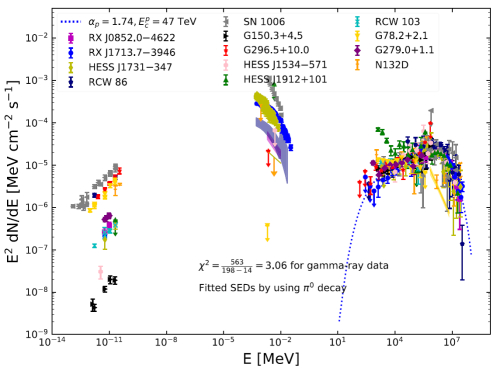Evidence for the Maximum Energy of Cosmic Rays Accelerated by Supernova Shocks
In a recent paper by ZENG and LIU et al from Purple Mountain Observatory (PMO) of the Chinese Academy of Sciences (CAS), published in The Astrophysical Journal, a sample of 13 SNRs with hard gamma-ray spectra is studied. Such kinds of SNRs are considered the most efficient accelerators of high-energy Galactic cosmic rays. However, this study shows that the distribution of protons producing the observed gamma-ray emission always cuts off below 0.1 PeV, reminiscence of the claim made by Lagage and Cesarky almost 40 year ago. This study therefore gives the first observational evidence for the maximum energy of cosmic rays accelerated by shocks of SNRs, suggesting a class of high energy sources distinct from shocks of SNRs responsible for the acceleration of PeV cosmic rays. Observations of gamma-rays above 0.1 PeV by the Large High Altitude Air-shower Observatory are expected to uncover these sources.
